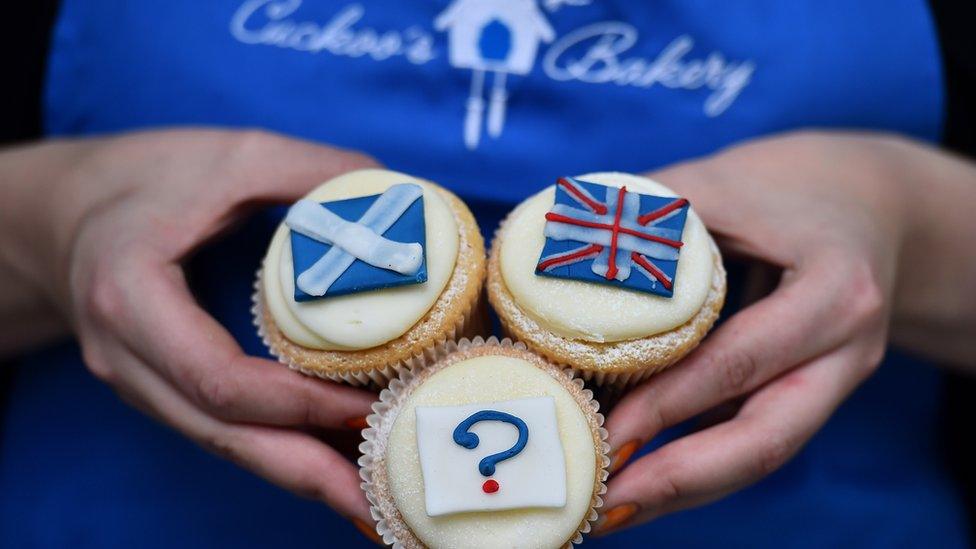The Declaration of Arbroath: Historic document displayed at National Museum of Scotland
- Published
- comments
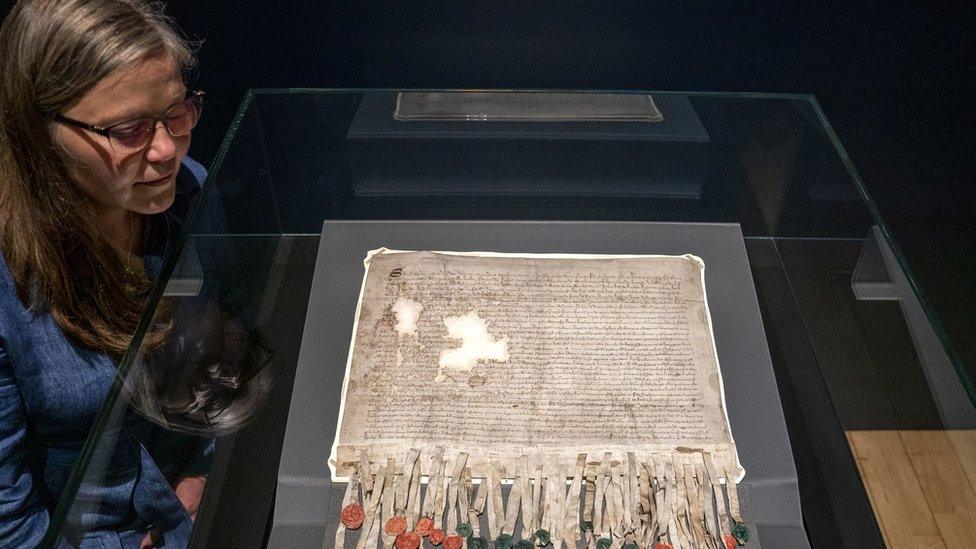
People will be able to see this document for the first time in several years at the National Museum of Scotland - but why is it important, and what does it mean?
This week, the Declaration of Arbroath is being put on public display in Edinburgh for the first time in 18 years.
It represents some important history for Scotland; it's a declaration of Scottish independence from way back in the 14th century.
Because it is so old and fragile, it can only be put on display to the public for a short amount of time, to keep it in good condition.
But what is the Declaration of Arbroath, and what is its history? Put on your helmet, grab your swords and shields, and get ready to go 700 years back in time...
The history

Picture this: it's the 14th century and Scotland and England are in the middle of what would become known as the Wars of Scottish Independence.
Edward II, the King of England, had been leading invasions into Scotland, and kept being defeated.
Robert Bruce - who had been declared King of Scotland - had been recapturing Scottish castles that had been taken over by the English.
Even though Bruce had won a big battle against England in 1314, called the Battle of Bannockburn, Edward II still did not recognise Scotland as independent.
Bruce realised to ensure Scotland was independent from England, he would need official recognition from somewhere else.
However, he also needed to prove that he had the rest of Scotland on his side to do so.
The Declaration
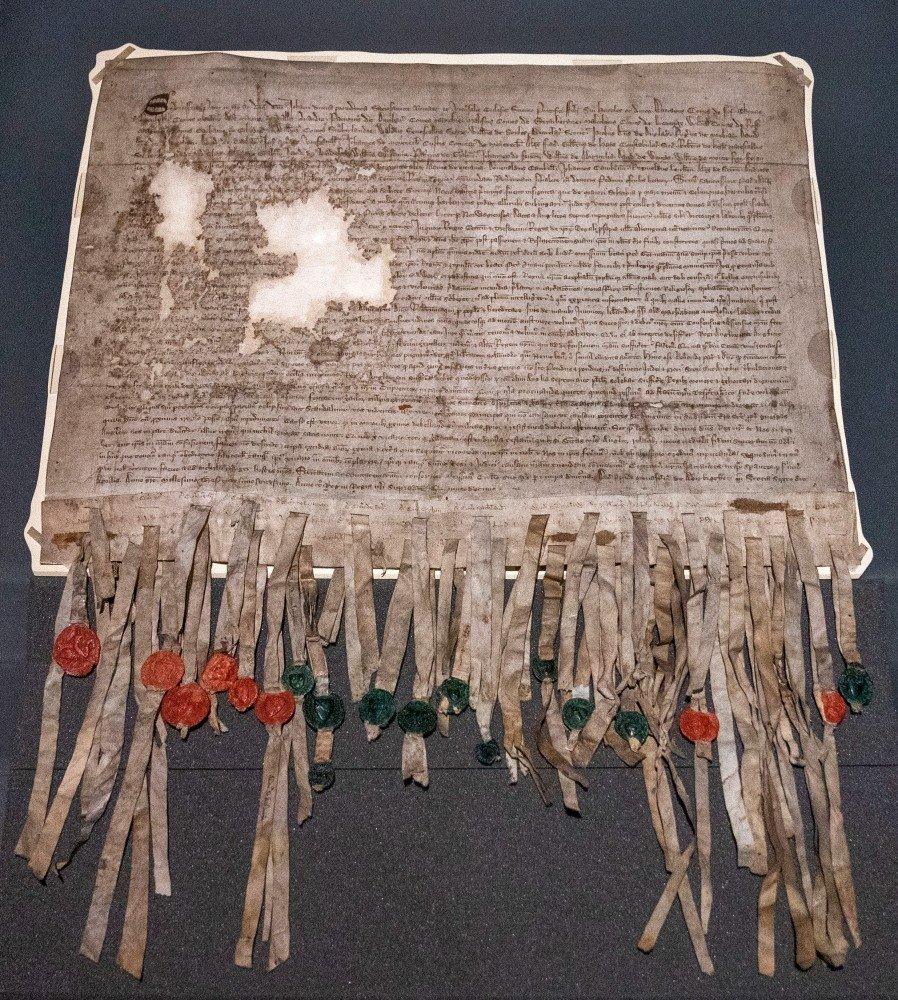
This is the Declaration of Arbroath in full. It was written in Latin - can you see any of the words?
In 1320, the nobles and barons in Scotland sent a letter to the Pope, who is the head of the Catholic Church, arguing for Scotland's freedom from the English.
This letter was called the Declaration of Arbroath, because it was put together by the Abbot of Arbroath.
It was extremely important that the letter came from the barons in Scotland, because it showed they were on Robert Bruce's side. Back then, it was important to have the barons on your side as a ruler, because they usually had a lot of political influence, and a lot of money.
After the letter was sent, the Pope wrote to Edward II asking him to make peace with Scotland. In 1328, Scotland's independence was officially recognised.
The document itself looks really interesting due to all the dangling seals at the bottom of the page. And no - that's not an animal seal - we're talking about wax, official letter seals! They represent all the different barons that signed the letter. You can still see these on the Declaration now.
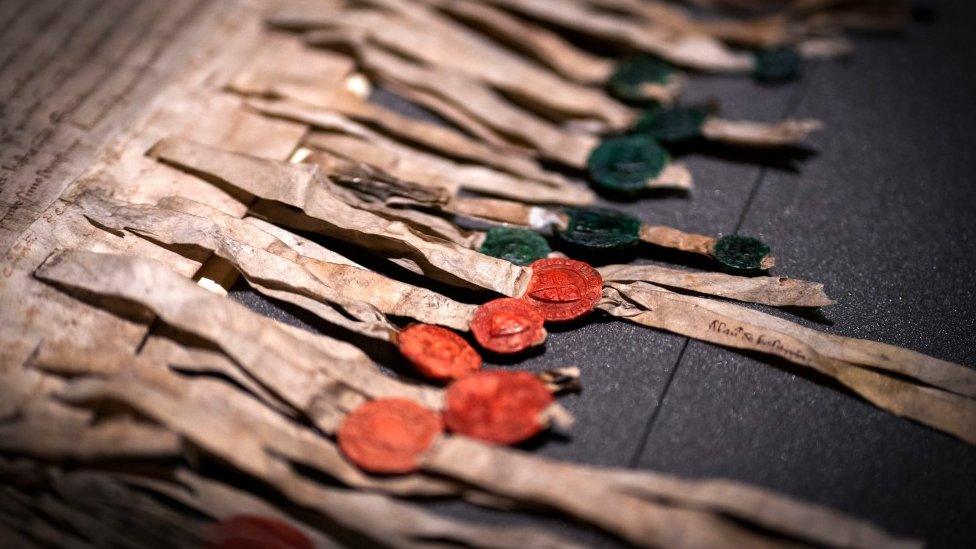
There's only around 19 of the 50 original seals on the document
Why are people talking about it now?
This is the first time the document has been on display for 18 years. The last time it was shown was in Scottish Parliament in 2005.
It was meant to be shown in April 2020, as that would have been a whole 700 years since the letter was written. However, due to the coronavirus pandemic, it was postponed.
The Declaration is extremely important for Scotland's history, and also represents the history between Scotland and England.
- Published21 March 2023
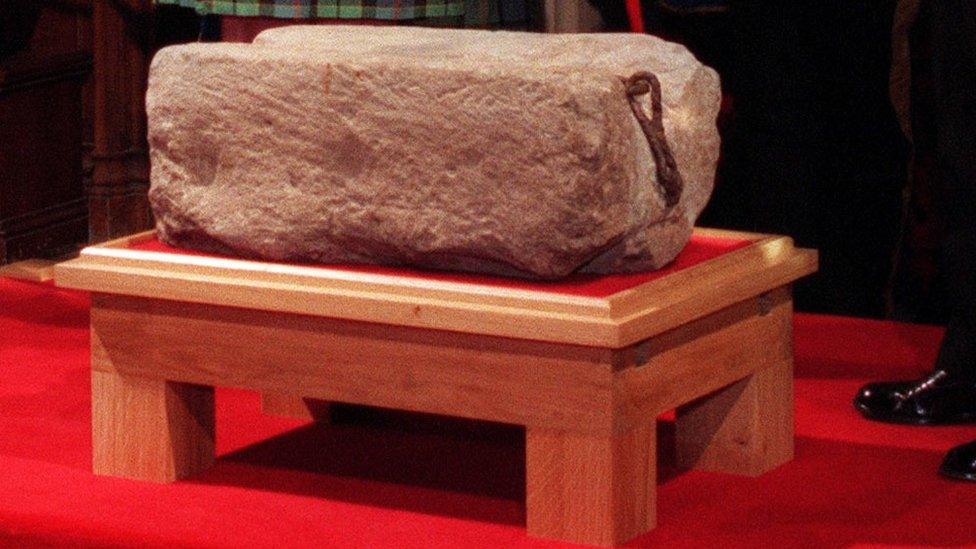
- Published4 May 2021
